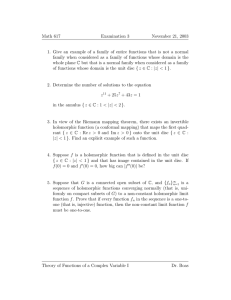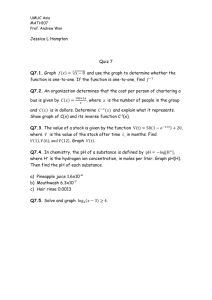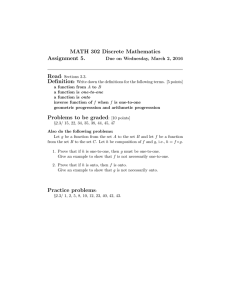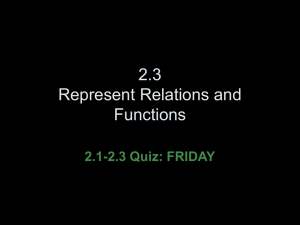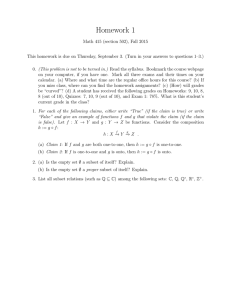Exercise on univalent functions
advertisement
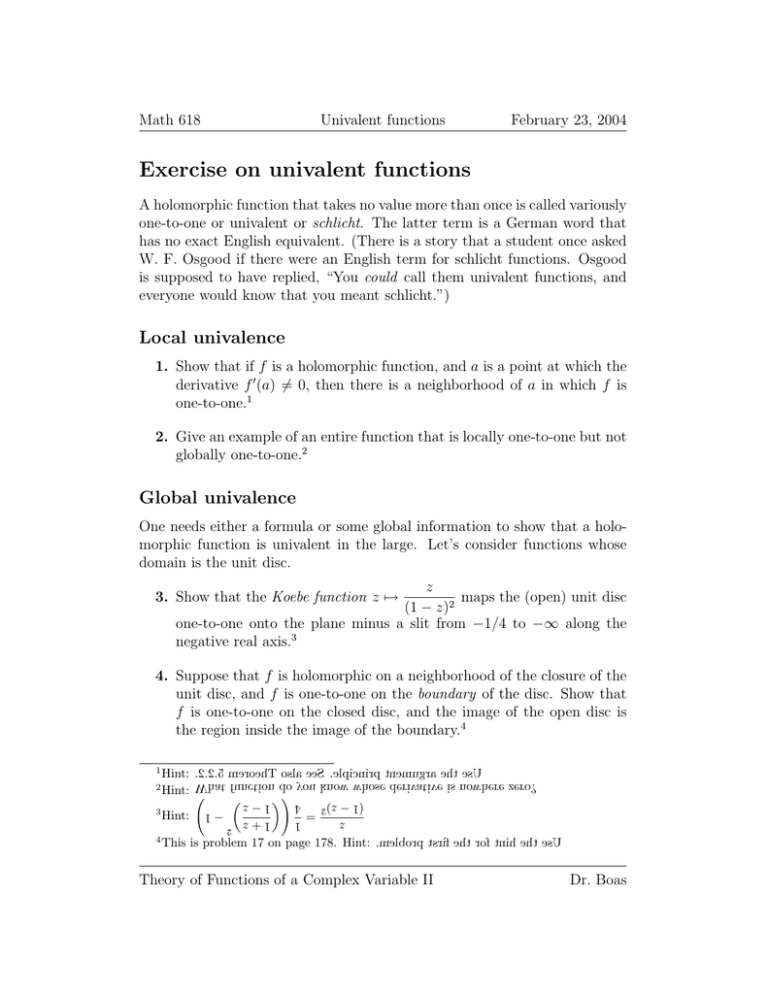
Math 618 Univalent functions February 23, 2004 Exercise on univalent functions A holomorphic function that takes no value more than once is called variously one-to-one or univalent or schlicht. The latter term is a German word that has no exact English equivalent. (There is a story that a student once asked W. F. Osgood if there were an English term for schlicht functions. Osgood is supposed to have replied, “You could call them univalent functions, and everyone would know that you meant schlicht.”) Local univalence 1. Show that if f is a holomorphic function, and a is a point at which the derivative f 0 (a) 6= 0, then there is a neighborhood of a in which f is one-to-one.1 2. Give an example of an entire function that is locally one-to-one but not globally one-to-one.2 Global univalence One needs either a formula or some global information to show that a holomorphic function is univalent in the large. Let’s consider functions whose domain is the unit disc. z maps the (open) unit disc (1 − z)2 one-to-one onto the plane minus a slit from −1/4 to −∞ along the negative real axis.3 3. Show that the Koebe function z 7→ 4. Suppose that f is holomorphic on a neighborhood of the closure of the unit disc, and f is one-to-one on the boundary of the disc. Show that f is one-to-one on the closed disc, and the image of the open disc is the region inside the image of the boundary.4 1 2 Hint: .2.2.5 meroehT osla eeS .elpicnirp tnemugra eht esU What function do you know whose derivative is nowhere zero? Hint: 3 Hint: 4 This is problem 17 on page 178. Hint: .melborp tsrfi eht rof tnih eht esU 1 z = (1 − z)2 4 õ 1+z 1−z −1 ¶2 ! Theory of Functions of a Complex Variable II Dr. Boas

